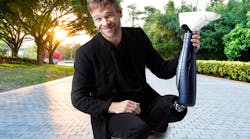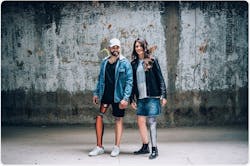UNYQ, a company based in San Francisco, will begin selling its 3D-printed prosthetic leg socket—the component that supports and helps holds the person’s residual leg to the prosthetic—in the UK and Germany. The company plans on expanding sales into the U.S. in July 2019 and in Japan in October. It will be available for order immediately, with the finished product shipping within three weeks. The company aims to have several clinics on board by the end of the year and anticipates the product will be covered by insurance in most targeted countries.
The UNYQ Socket offers several benefits both to the user and clinician. Users benefit from an aesthetically appealing, lightweight socket that eliminates much of the metal found in a traditional prosthetics. The design also combines several parts in one, a hallmark of 3D-printed parts. This lowers costs and reduces complexity. The socket also contains sensors that record the individuals’ activity, including the number of steps taken and calories burnt. It has also been ISO 10328-tested for cyclic and static strength in lower-limb prosthetics.
People wearing the UNYQ prosthetic socket and leg covers.
Clinicians benefit from improved patient satisfaction due to the custom fit and comfort, access to data, and the ability to easily replace broken or lost prosthetics. This is key, as it saves time for the clinician and the end user. Many amputees have more than one prosthetic leg, so replication of the socket at the press of a button saves several visits.
The UNYQ Socket is one of various additional products the company plans to add to its Prosthetics Wear line, with the aim of eventually providing a complete, “aesthetically unified” prosthetic leg product by the end of 2021.
The Socket is designed to be used with the company’s line of personalized 3D-printed prosthetic leg covers. These are cosmetic, protective covers for prosthetic, giving the user more opportunity for “showing off [their] personality as they see fit.” Both the 3D-printed prosthetic leg cover and socket are part of the “total leg solution” UNYQ plans to provide.


